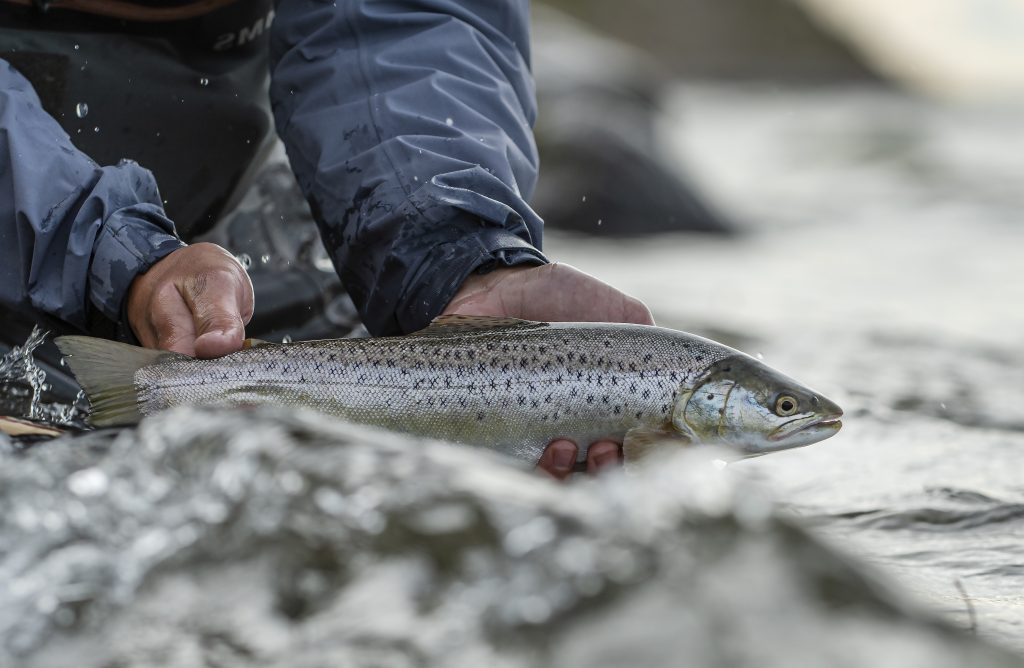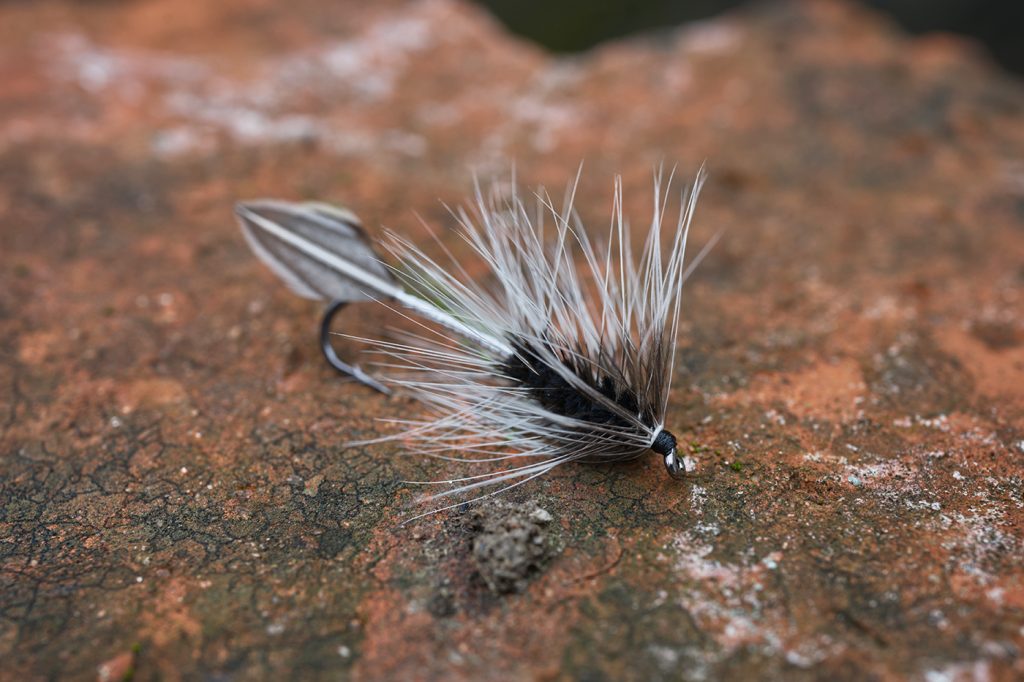
I don’t think there’s a fly with a scarier name than this. A demon from a big hole – however it looks nothing like a demon, it is only a streamer fly. There’s endless debate on how old a fly has to be, before it can be called a classic. However I’ll classify this as a classic. It was invented in 1965 by Pete Narancich, in Montana and named after the famous Big Hole River.
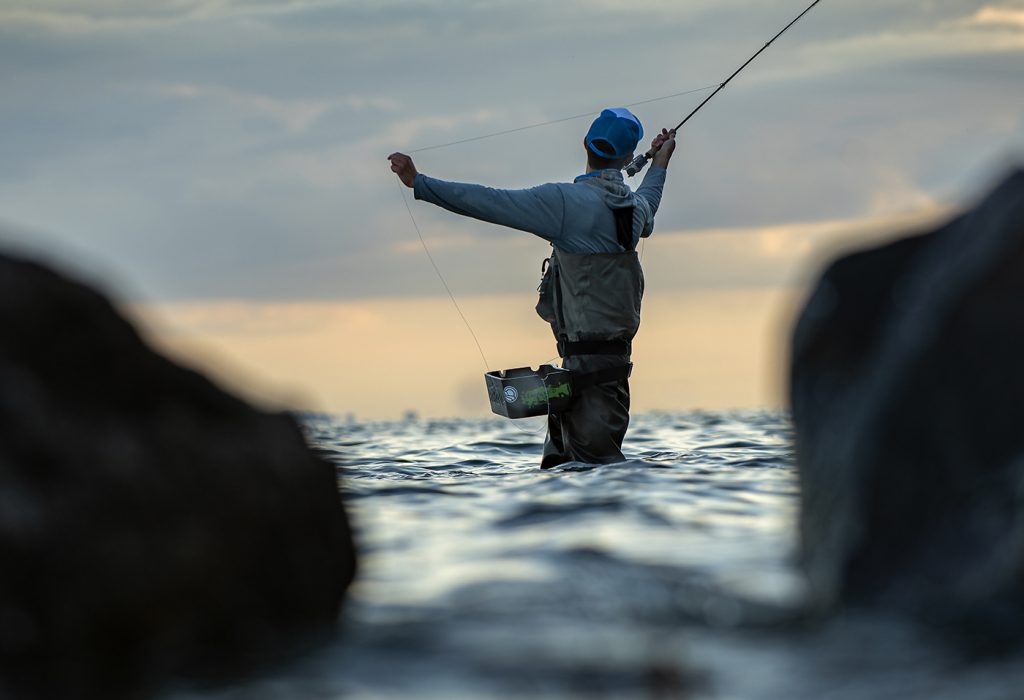
It must have fished well, since Pete decided to call it a demon. From personal experience, I know it does, but a little more about that later. It’s one of those flies that now has several variations and it has travelled far from the Big Hole River. All the way to Denmark and maybe even further?
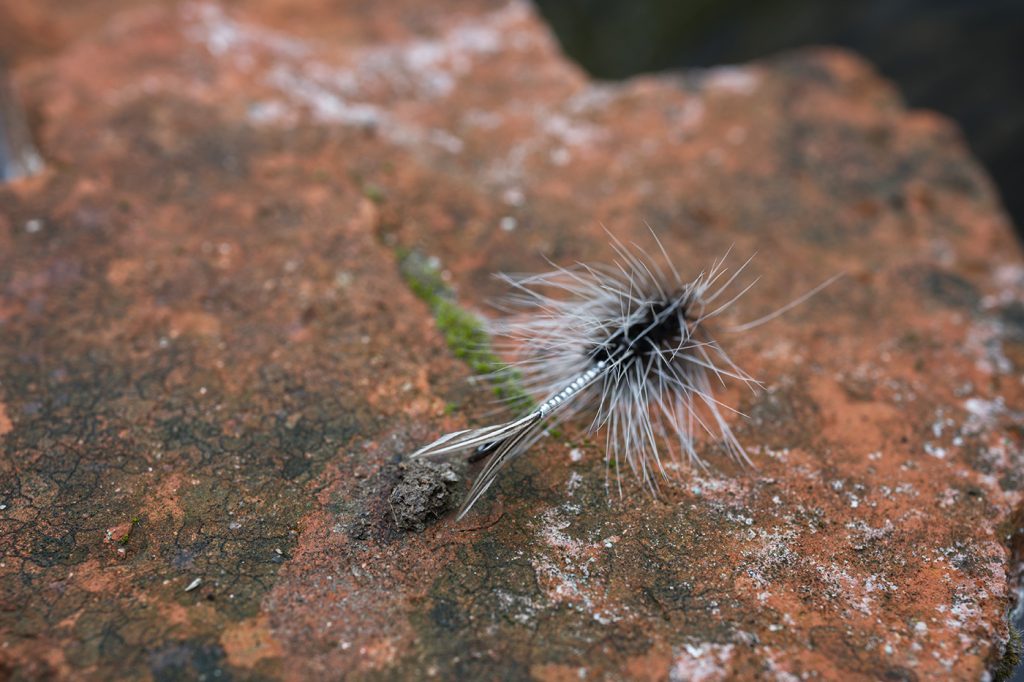
Not many are aware of the original pattern. The ones I see today, including my own, don’t feature the jungle cock tail the original did. Another slightly unusual feature of the fly is the densely hackled thorax. In his bible from 1950, “Streamers and Bucktails, the big fish flies”, Joseph D. Bates, Jr. lists two variants. My copy of the book is the one from 1979, so the two variants are older than this. The pattern given by Bates looks like this:
Hook: Size 2-10, 2X or 3X long.
Tail: Two jungle cock body feathers splayed (or a few fox squirrel tail fibers).
Body: Rear half, silver tinsel, front half, black chenille.
Hackle: A badger hackle heavily palmered over the chenille.
Bates also says that all black versions (still silver rear body) are in use as well as some using a grizzly hackle over the chenille, when tying the fox squirrel tail version. I’ve no doubt that this is an effective streamer, and yet, I’ve never personally fished it in river. Now I have the one I tied for this blog and it’ll wet it, when I head out for a brown trout or a sea trout tomorrow.
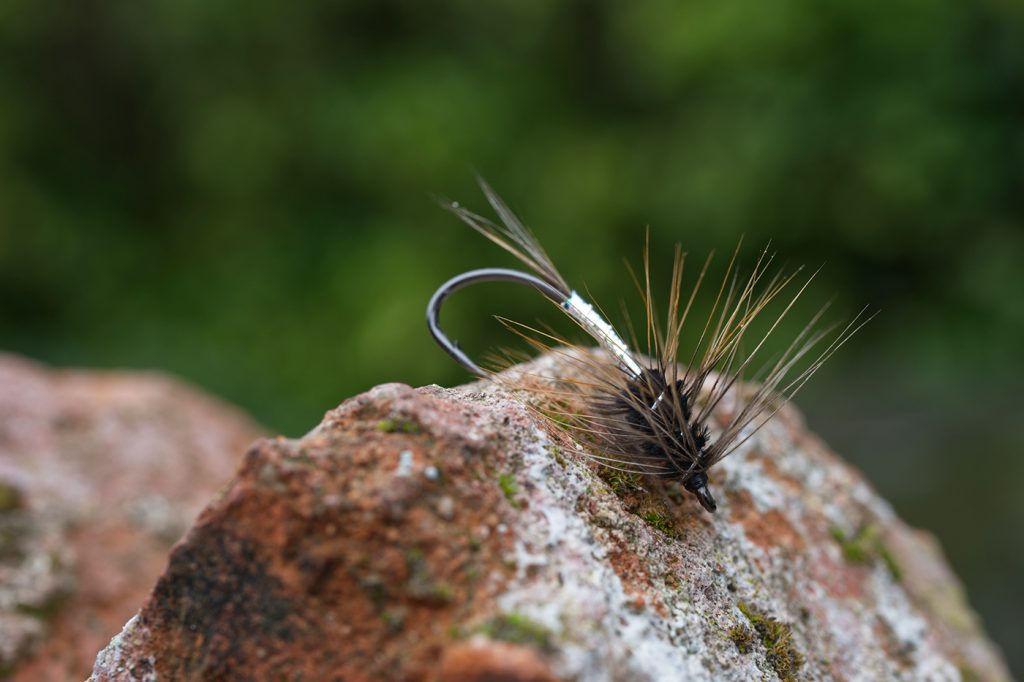
I first became aware of the fly in Danish Jan Grünwald’s book, “Havørred – spin og flue I saltvand” (Sea trout – spin and fly fishing in salt water). His version is somewhat different and slightly adapted to the harsher salty environment. He still uses splayed hackle tips for the tail (furnace, I prefer just a bunch of hackle fibres). The rear part is silver, but covered with pearl tinsel. Over the black chenille Grünwald has substituted the badger (or grizzly) hackle with a furnace one. Finally the whole fly is ribbed with silver tinsel, no doubt to strengthen the fly.
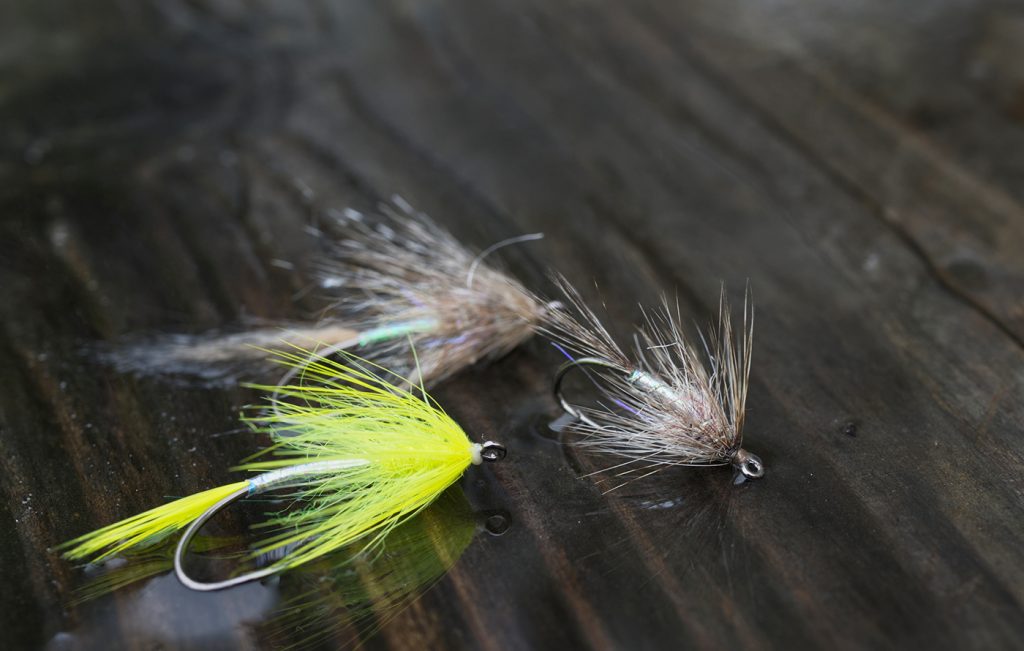
It doesn’t really look like anything, it just looks alive. It’s been used extensively on the Danish shores for decades and for me, it’s one of those flies I often tie on when I don’t really know what to tie one. I mostly fish the black/furnace version, but the fly is also popular in hot orange, chartreuse and pink. I also have a few other variants in my box. I tie small, grey ones for picky fish in shallow low water and even a few other variants. Somehow the pattern and style just looks like something a fish has to eat, just to see if it’s food or not.
